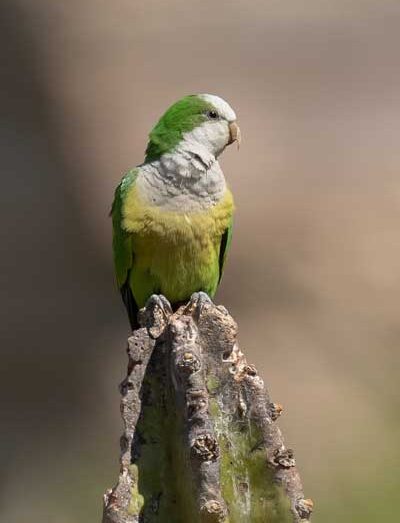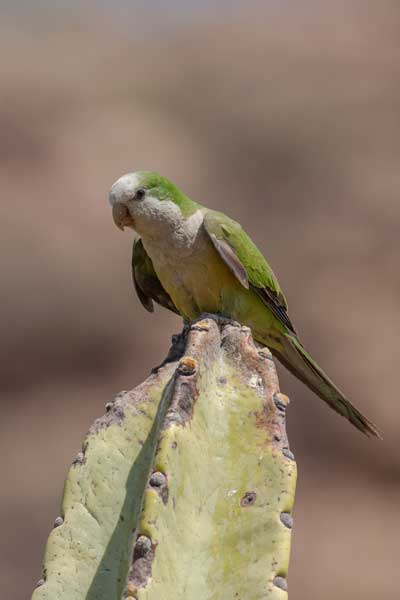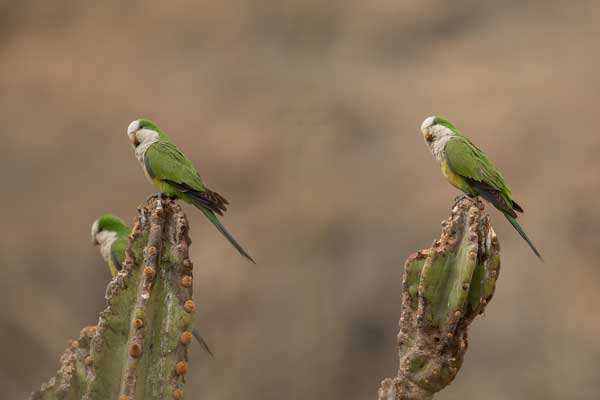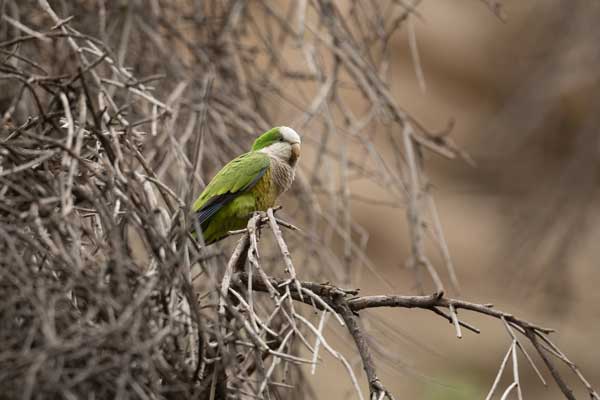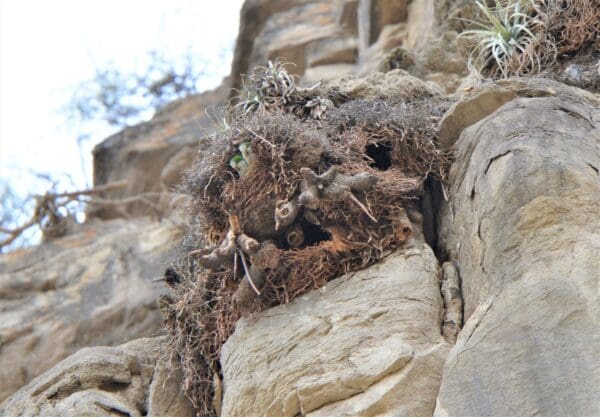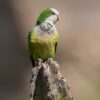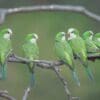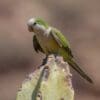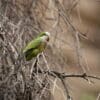DID YOU KNOW?
The Cliff Parakeet was a subspecies of the Monk Parakeet. Like the Monk, the Cliff Parakeet has established feral populations all over the US and other parts of the world.

Myiopsitta

luchsi
Size:
29 cm (11.3 in)
Weight:
127-140 g (4.4-4.9 oz)
Subspecies including nominate:
one
Colour Adult:
Overall mainly olive-green, with forehead and forecrown pale grey, and breast grey to abdomen, then mustard in colour. Beak horn colour.
Colour Juvenile:
As in adults but forehead grey tinted with green.
Call:
Produces wide range of shrill screeches, squawks and chatter while in flight or when feeding.
More Information:
Captive Status:
Common
Longevity:
Up to 25 yrs.
Housing:
Aviary or suspended enclosure, minimum length 3 m (9.8 ft).
Diet:
Fruit such as: apple, pear, orange, cactus fruits, pomegranate, etc, forming about 30 percent of the diet; vegetables such as: carrot, celery, green beans and peas, corn; green leaves such as: Swiss chard, lettuce, sowthistle, dandelion, chickweed; spray millet; small seed mixture: canary, millet, safflower and limited sunflower seed; cooked beans or pulses and complete pellet.
Enrichment:
Socialisation, bathing; provide nest building materials, puzzle toys, bird safe chewables (fir, pine, elder, willow, sterilized pine cones, vegetable-tanned leather).
Nest Box Size:
This species nests in colonies. Provide a welded mesh base and a large supply of twigs, from which the pairs will build their nests. Nest boxes may be used (vertical box, 12″ x 12″ x 18″ (30.5 cm x 30.5 cm x 46 cm).
Clutch Size:
5-7
Fledging Age:
6-7 weeks
Hatch Weight:
—
Peak Weight:
—
Weaning Weight:
—
World Population:
2500-10,000 mature individuals, decreasing.
IUCN Red List Status:
Near Threatened
CITES Listing:
Appendix II
Threat Summary:
The species is persecuted as a crop pest and occasionally trapped for the cage-bird trade. It is suspected that the population is in decline.
Range:
Upper Bolivia, from SE La Paz, southern Cochabamba and W Santa Cruz to N Chuquisaca. Isolated to highlands.
Habitat:
Found in dry wooded country or open country with trees including gallery forest, isolated clumps of trees, palm groves, woodlots, savanna and thorn scrub with cacti. Also found in cultivated areas. Feral in some urban areas. Up to 3000 m (9840 ft).
Wild Diet:
Eats wild and cultivated seeds, fruits, leaf buds, pollen, blossoms, grass seeds (Poaceae) and ripening crops such as sunflower (Helianthus sp) and maize (Zea mays). Also thistle (Asteracease) and fruits of palm and various native trees, especially tala (Celtis spinosa). Sometimes includes insects and their larvae in its diet.
Ecology and Behaviour:
Occurs in pairs or flocks of 30-50 birds, with larger groups outside of breeding season. Roost communally, sleeping sometimes in nest outside of breeding season. Feeds in trees and on the ground, mixing with other species of birds such as pigeons and cowbirds.
Clutch and Egg Size:
5-7 ovate eggs, 28.0 x 21.5 mm (1.1 x 0.8 in).
Breeding Season:
October-December. Nests in cliff faces.
Related Links:
—
